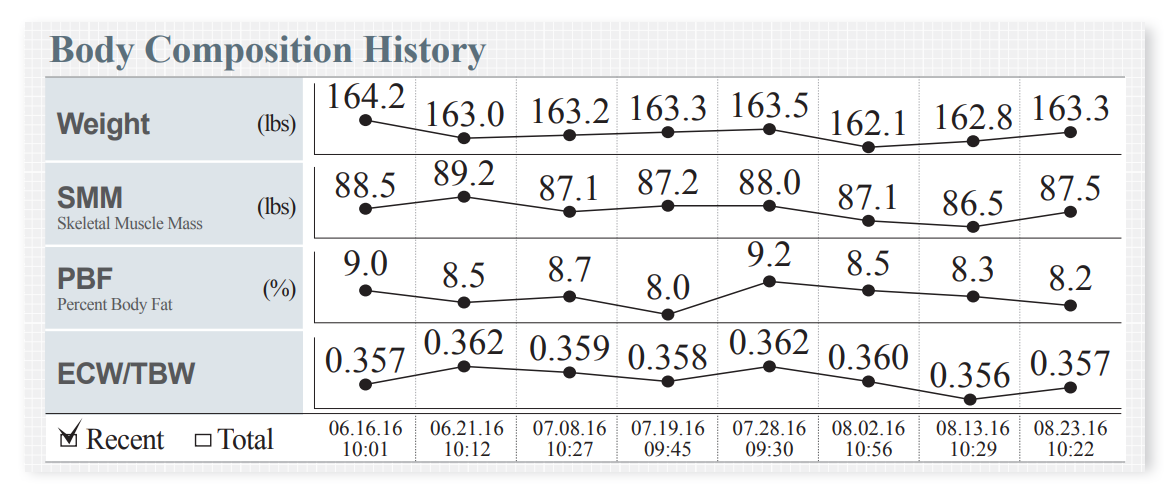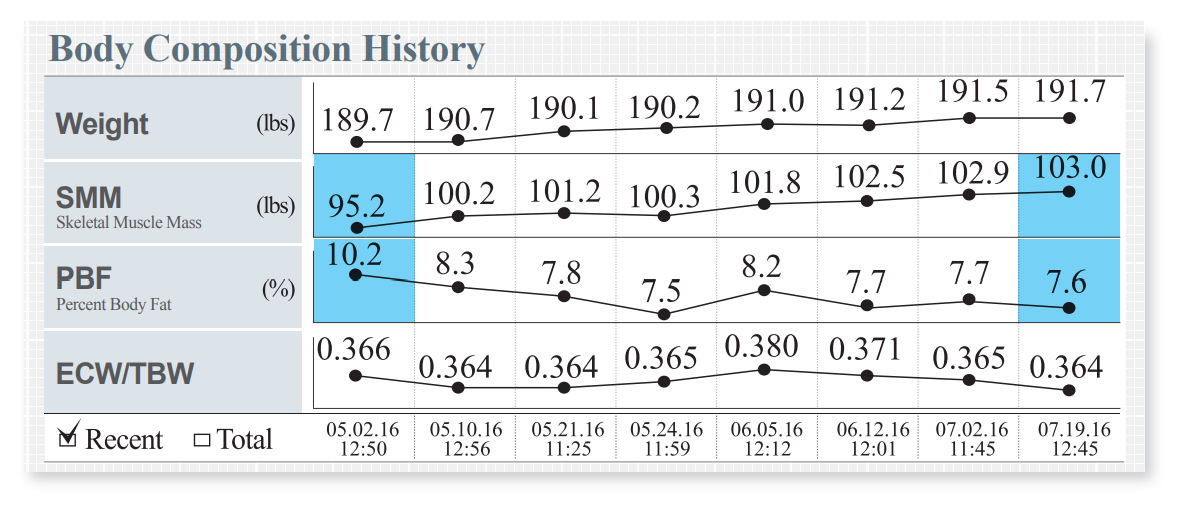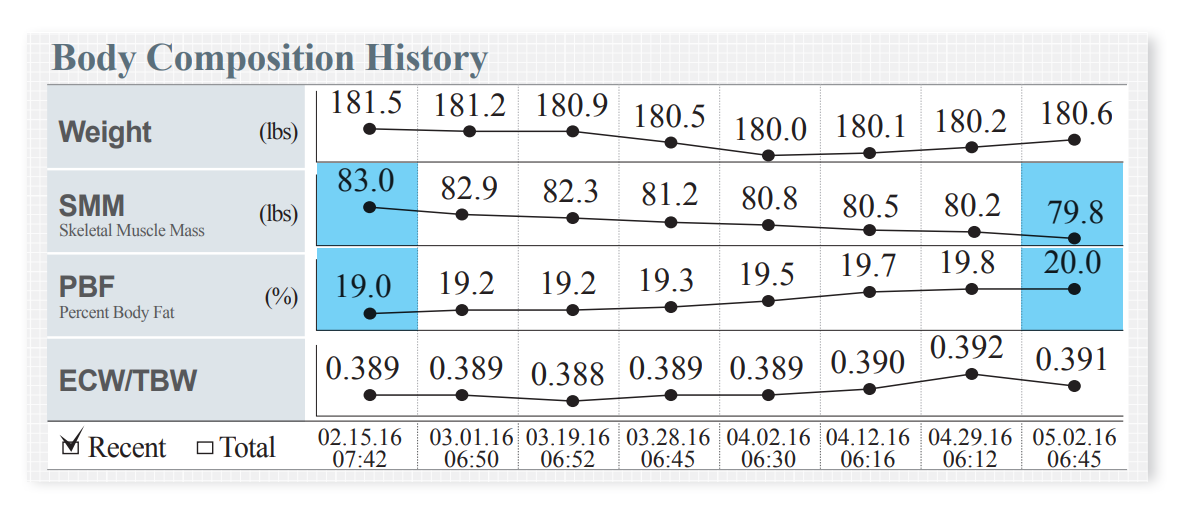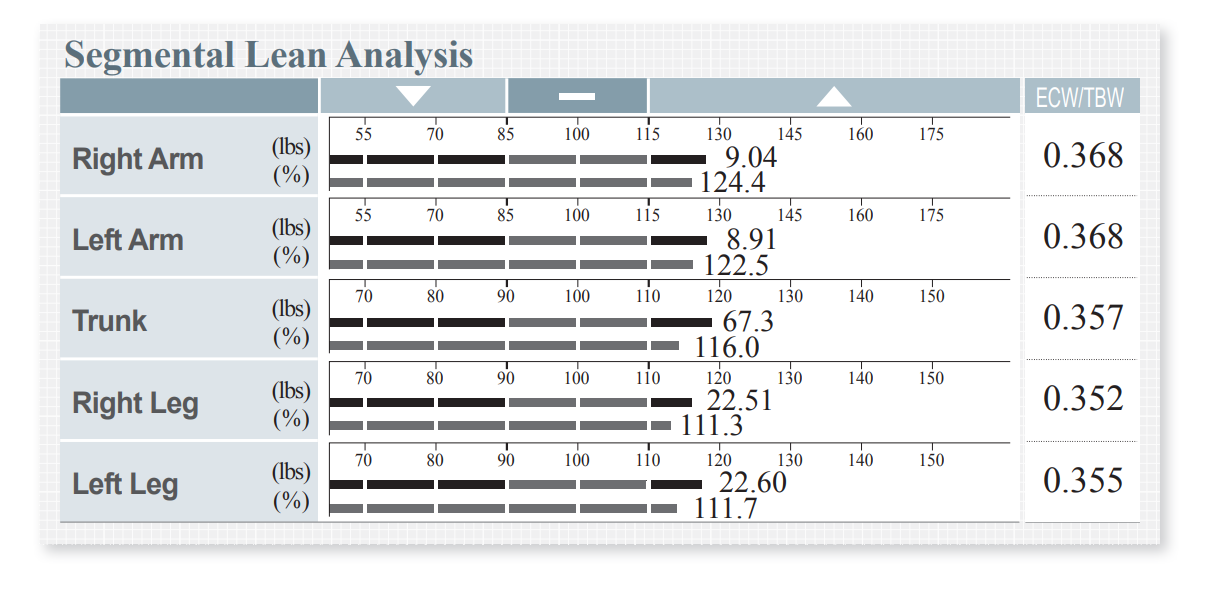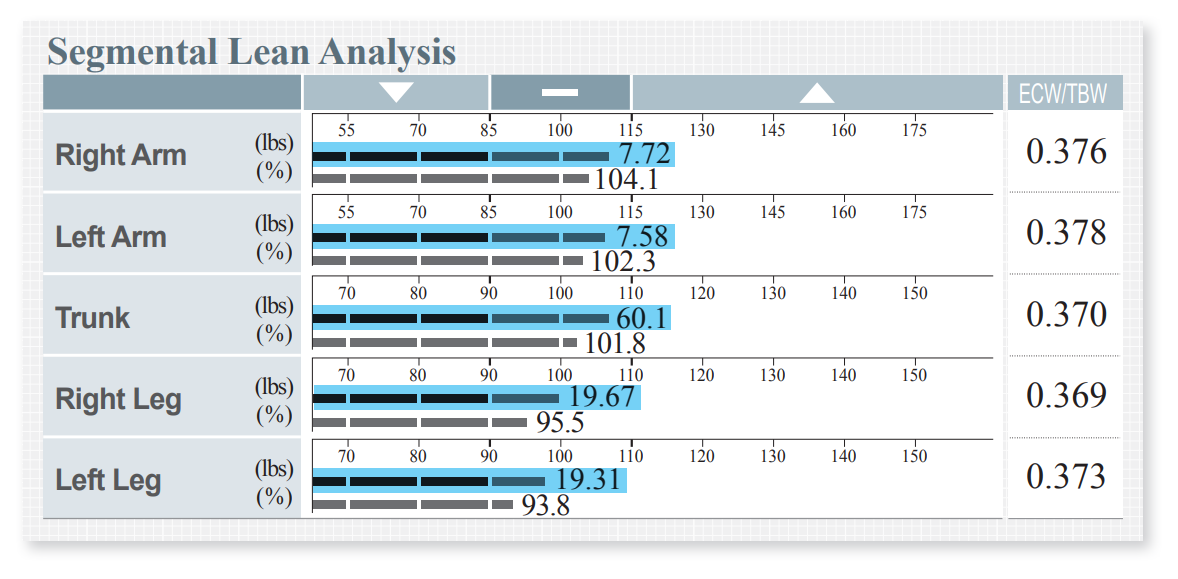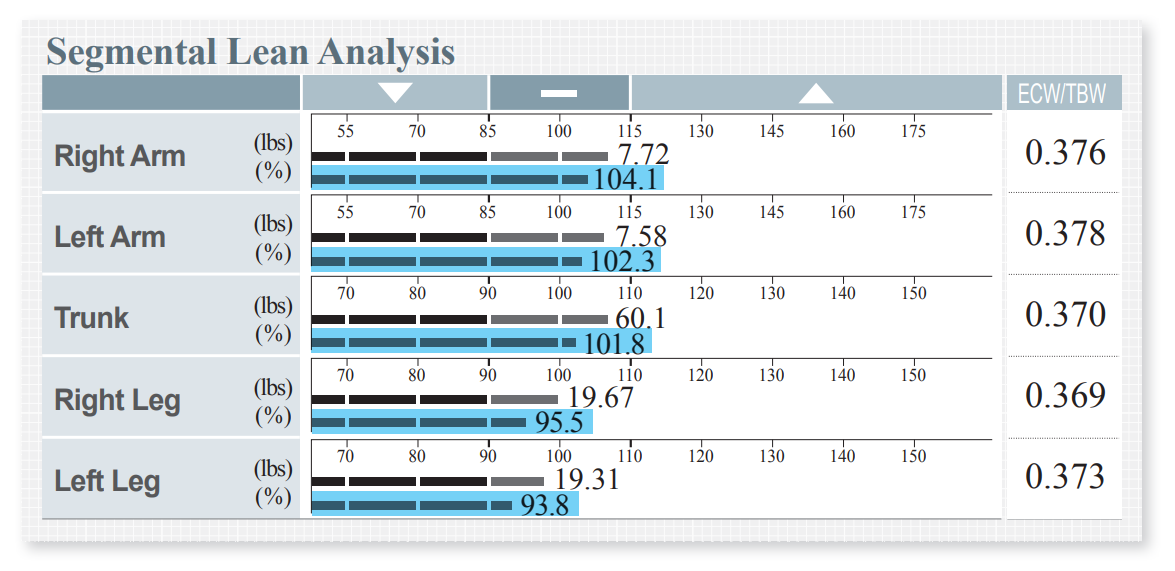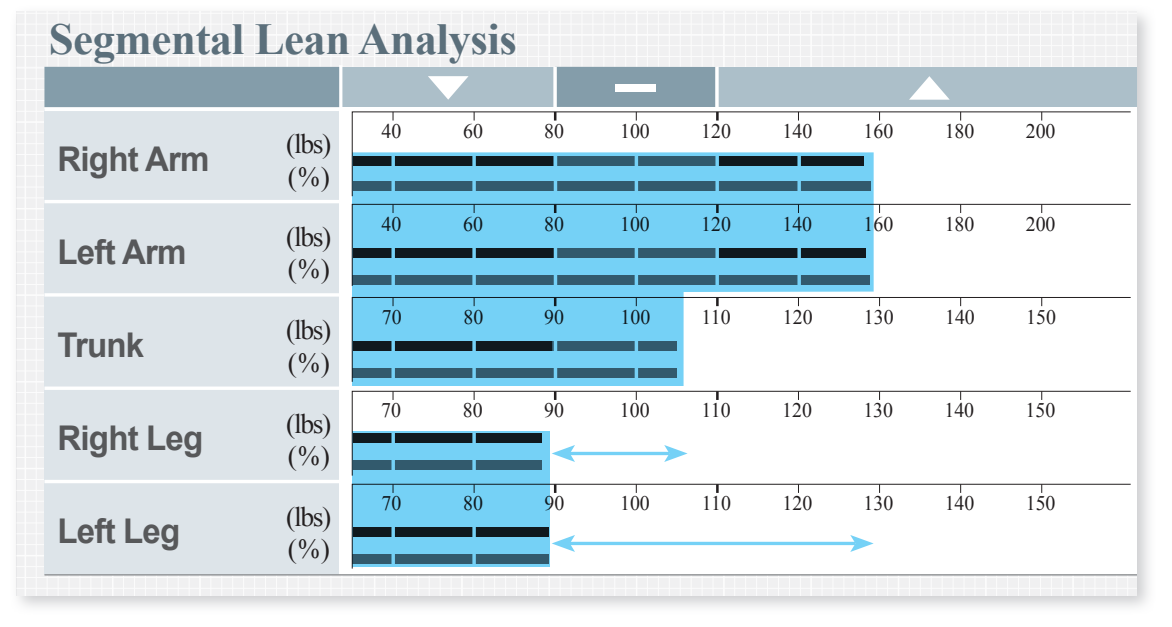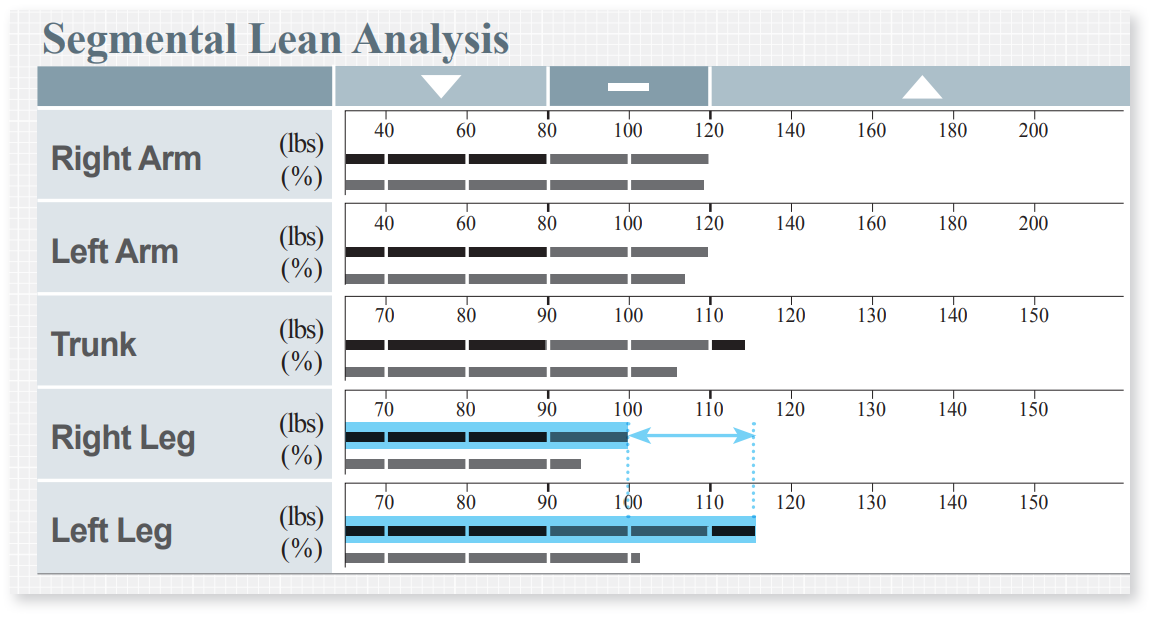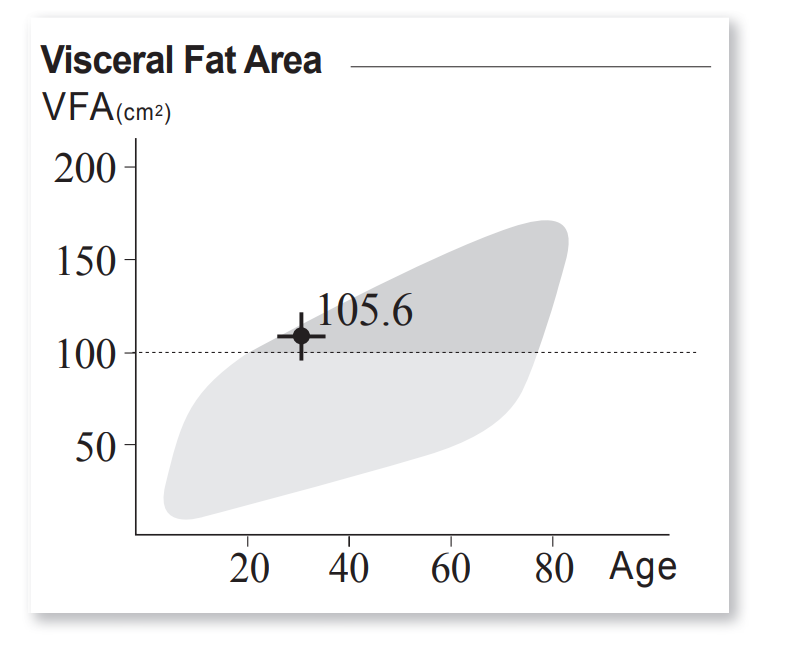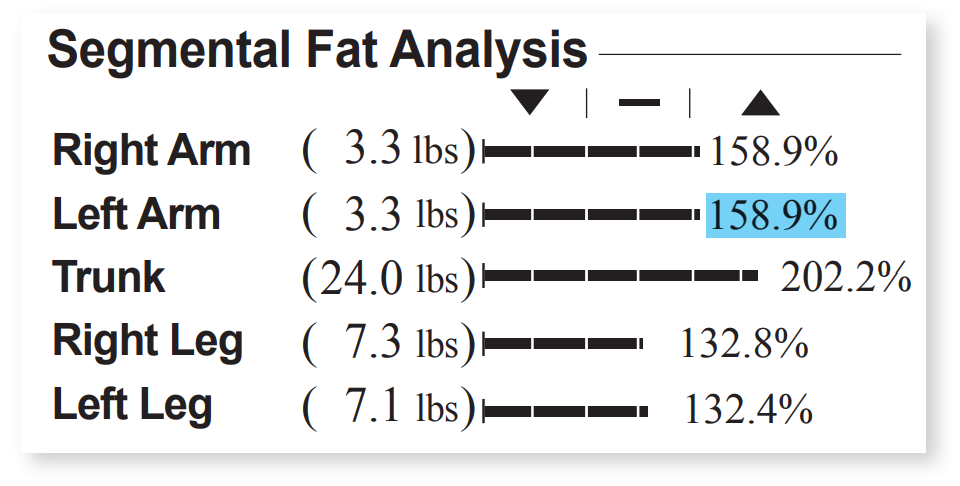There are many valuable outputs on the Result Sheet. However, the Segmental Lean Analysis, if used properly is arguably the most powerful section of the Result Sheet.
Lean Body Mass vs. Muscle Mass
In order to fully understand this section, you must fully understand what it is not. The information in the Segmental Lean Analysis shows how much Lean Body Mass is contained in each segment; not how much “muscle” is in each segment.
This is an important distinction, which you can learn more about in our blog post “Lean Body Mass vs. Skeletal Muscle Mass: What’s The Difference?”
While it is true that Skeletal Muscle gains in a body segment will be reflected as gains in the Segmental Lean Analysis chart, not every gain in Lean Body Mass can be explained by muscle. That’s because Lean Body Mass also accounts for body water. This makes this chart useful not just for tracking muscle, but also for injury and disease states.
TOP AND BOTTOM BARS
The InBody divides the body into 5 body segments: the two arms, two legs, and the trunk, which can be thought of as covering the area between the neck and legs. The information for each body segment is reported as two bars.
THE TOP BAR
The top bar shows how much Lean Body Mass in pounds is in a given segment. Just like with the Muscle-Fat Graph, the top bar of the Segmental Lean Analysis compares the pounds of Lean Body Mass against the average expected amount of Lean Body Mass for that person’s height.
Your clients should always work to be at 100% or higher.
THE BOTTOM BAR
The bottom bar is different. The number shown by the bottom bar is the percentage and makes it easier to quickly understand see how close to (or past) 100% each bar extends.
What is this bar showing? It’s comparing your client’s Lean Body Mass against their measured body weight. This shows whether or not your client has enough Lean Body Mass to support their own body weight, where 100% = sufficient.

BREAKING IT DOWN
In the above example, the 3 upper body segments are over 100%, but the lower body segments are not. If you’re working with a client like this, they may benefit from exercises that target Lean Body Mass development in their legs. This will help them achieve a more balance body composition and may have other positive effects, such as body fat reduction, as well.
Which clients may be at risk for undevelopment?
Any person can theoretically be underdeveloped in a body segment, and without Segmental Lean Analysis, identifying this can be difficult. However, several groups of clients may be at more risk than others.
Here are three:
1. Sedentary adults Sedentary adults who do not exercise commonly have below 100% Segmental Lean Mass especially in their legs, primarily due to jobs that require them to sit throughout most of the day.
2. “Skinny Fat” individuals (sarcopenic obese)
People with “skinny fat” profiles have more fat than is healthy for their bodies coupled with a low amount of Lean Body Mass. Their relatively overdeveloped fat or underdeveloped muscle mass contributes to their body weight and may result in scores below 100% for one or more body segment.
3. The elderly The elderly are at particular risk for not having sufficiently developed Lean Body Mass due to their tendency to lose muscle as a result of increasing inactivity. This impacts their ability to care for themselves as they age and puts them at greater risk of falling and broken bones.
UPPER/LOWER MUSCLE IMBALANCE Upper/lower body imbalances are fairly common in today’s increasingly sedentary workforce, and you’ll likely encounter cases where the upper body is developed, but the lower body isn’t, like in the example below.

BREAKING IT DOWN
If your client looks like this, he or she needs to increase the LBM in their lower legs. Even though the upper body is sufficiently developed, the lower body is still at risk for injury due to the low amount of Lean Body Mass. This client, despite their upper body, risks developing health issues if they keep this body composition.
RIGHT/LEFT MUSCLE IMBALANCE
Another imbalance the Segmental Lean Analysis can reveal is the imbalance between the right and left arms and/or legs.
Although this client has a balanced upper body, there’s a significant imbalance between the right and left legs. There are many reasons why this could have occurred: For example, an injury can cause swelling and cause the LBM values to go up.

BREAKING IT DOWN
If you are working with a client whose body composition looks like this, it is helpful to find out more about his or her medical history to determine whether an imbalance is due to swelling or from underdeveloped LBM.
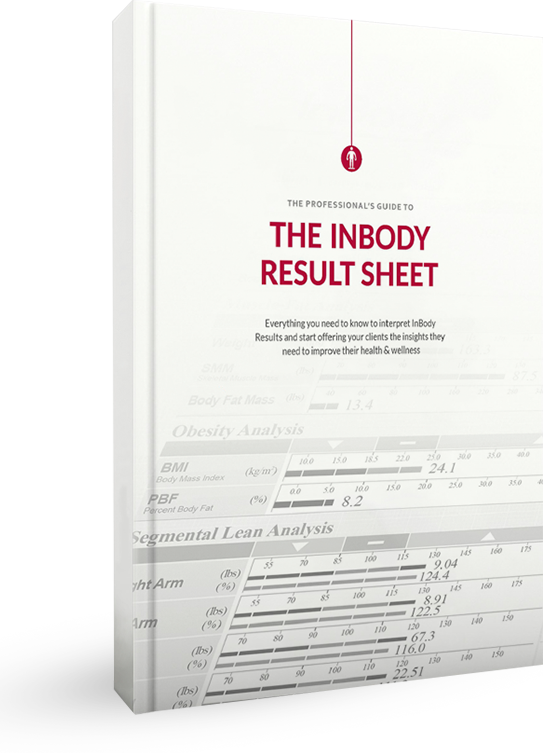





 BREAKING IT DOWN
BREAKING IT DOWN












